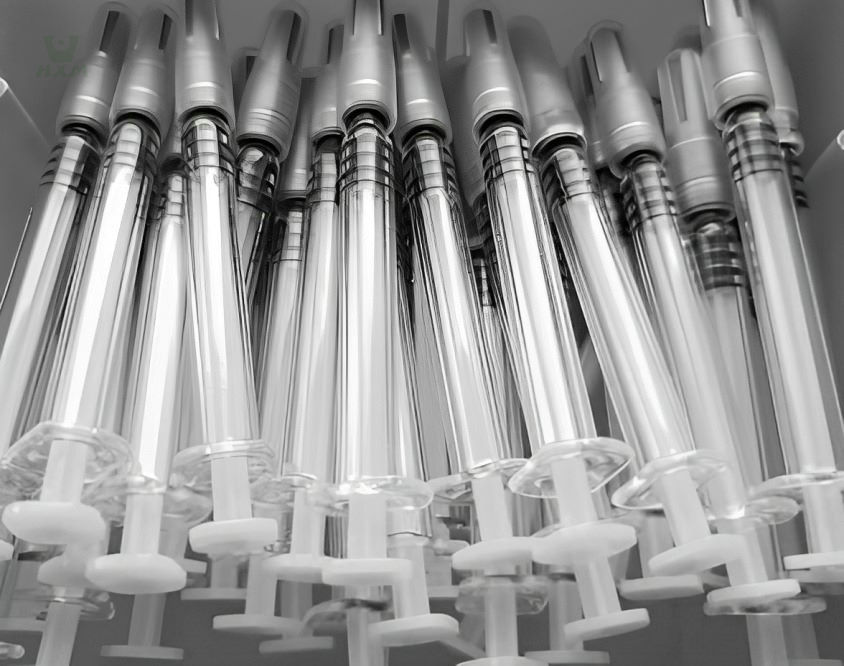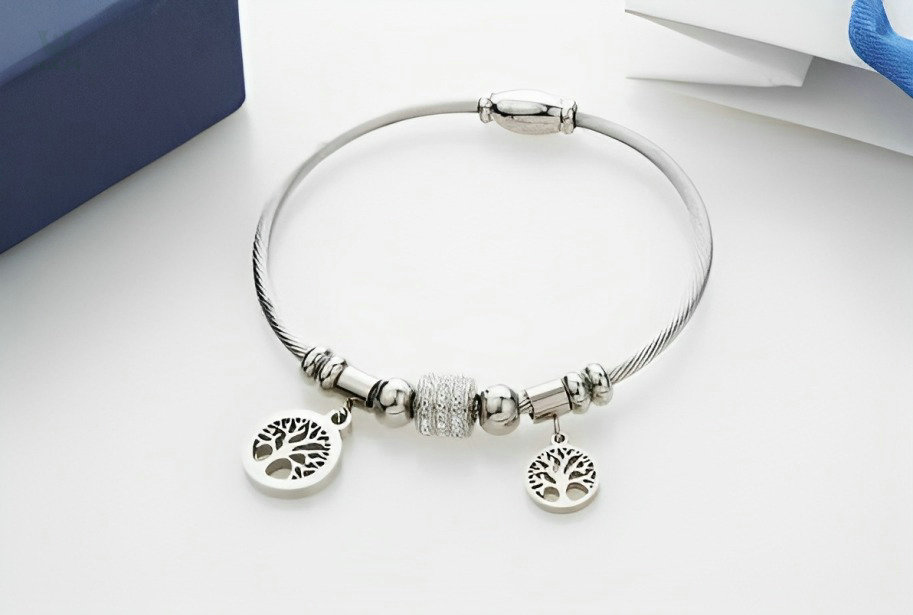Is Alloy Hypoallergenic?
Have you ever experienced skin irritation or allergic reactions when wearing certain jewelry or using metal objects? If so, you’re not alone. From jewelry to medical implants, the presence of allergens can cause discomfort and even severe reactions in individuals with sensitivities. Many individuals suffer from metal allergies, and one common culprit is alloy. Alloy is a type of metal made by combining two or more elements, often to enhance its properties and create a more affordable alternative to precious metals. While alloy has its merits, the question remains: Is alloy hypoallergenic? In this article, we will delve into the world of alloys, exploring their composition, uses, and potential impact on skin sensitivities. Let’s unravel the mystery behind alloy and its hypoallergenic properties to determine whether they are indeed safe for those with allergies and sensitivities.
Is Alloy Hypoallergenic?
The hypoallergenic properties of an alloy depend on its composition and the specific metals it contains.
Some alloys, such as titanium, platinum, and certain types of stainless steel, are often considered hypoallergenic. These alloys have low or negligible levels of allergenic metals like nickel and cobalt, which are known to cause allergic reactions in some people.
On the other hand, certain alloys may still contain higher levels of allergenic metals, making them more likely to trigger allergic responses in sensitive individuals. For example, alloys with high nickel content can pose a risk for those with nickel allergies. Similarly, alloys containing cobalt may cause reactions in individuals sensitive to this metal.
What is hypoallergenic?
The term “hypoallergenic” refers to a substance or material that is less likely to cause an allergic reaction. It is a term commonly used in the context of products, particularly those that come into contact with the skin or body. When a material is labeled as hypoallergenic, it means that it has been formulated or designed to minimize the risk of triggering allergies or sensitivities in individuals.
In the case of alloys, hypoallergenic alloys are those that have been specifically crafted to reduce the presence of allergenic substances. These alloys are carefully formulated to minimize the amount of potentially irritating or allergenic metals, such as nickel or certain types of alloys, that can cause allergic reactions in some individuals.
It is important to note that while hypoallergenic materials are generally considered safer and less likely to cause allergic reactions, they may not guarantee a completely allergy-free experience for everyone. Allergies and sensitivities can vary from person to person, and individual reactions can still occur depending on the specific circumstances and personal sensitivities.
The discussion of the hypoallergenic properties of alloys holds significant importance for several reasons. Firstly, allergies and sensitivities to certain metals, such as nickel, are relatively common, affecting a substantial portion of the population. By understanding the hypoallergenic properties of alloys, individuals with known sensitivities can make informed choices about the materials they come into contact with, reducing the risk of allergic reactions.
Secondly, hypoallergenic alloys play a crucial role in various industries, particularly in the production of jewelry, medical devices, and cosmetic products. For individuals who have sensitivities or allergies, using hypoallergenic alloys ensures the compatibility and safety of these products, minimizing the potential for adverse reactions.
Furthermore, discussing hypoallergenic properties raises awareness among alloy suppliers, designers, and suppliers, encouraging them to develop and offer safer alternatives for individuals with sensitivities. This not only meets the needs of a specific consumer segment but also promotes inclusivity and provides options that prioritize the well-being and comfort of individuals with allergies or sensitivities.
Allergies and Sensitivities
Overview of metal allergies and sensitivities
Metal allergies and sensitivities are common reactions that occur when the body’s immune system responds negatively to certain metals. These allergic reactions can be triggered by various metals, including nickel, cobalt, chromium, and others.
Metal allergies are a significant concern, as they can limit the use of certain materials in various industries. For example, jewelry made with nickel is a common cause of allergic reactions, affecting a significant number of individuals. In addition, medical devices, such as orthopedic implants or dental restorations, may also cause allergic reactions in some patients.
It is important to note that metal sensitivities can vary among individuals, and what may cause a reaction in one person may not affect another. Some people may have a higher predisposition to develop metal allergies, while others may be more tolerant.
Understanding metal allergies and sensitivities is essential in developing hypoallergenic materials, including alloys. By identifying and using metals that are less likely to trigger allergic reactions, manufacturers can provide products that are safer and more suitable for individuals with sensitivities. This awareness also enables healthcare professionals to choose appropriate materials for patients, reducing the risk of adverse reactions.
Common symptoms and reactions
Common symptoms and reactions associated with metal allergies and sensitivities can vary in severity and presentation. When an allergic individual comes into contact with a specific metal, they may experience a range of symptoms that can affect the skin, respiratory system, or even the whole body.
Skin-related symptoms are among the most common manifestations of metal allergies. These can include itching, redness, swelling, rashes, and blistering. In some cases, the affected area may become dry, scaly, or develop a crusty texture. The reaction can occur immediately after contact or appear gradually over time, depending on the individual’s sensitivity.
Respiratory symptoms may also arise, especially when metals are inhaled as dust or fumes. Allergic rhinitis, characterized by sneezing, nasal congestion, and itching, can occur. In more severe cases, asthma-like symptoms such as wheezing, coughing, and shortness of breath may manifest.
Furthermore, some individuals may experience systemic reactions, where the allergy affects the entire body. These reactions can range from mild symptoms like fatigue, headache, or nausea to more severe responses, including hives, swelling of the face or throat, and anaphylaxis—an acute, potentially life-threatening allergic reaction.
It is important to note that the specific symptoms and severity can vary from person to person, as individuals have different sensitivities and immune responses. If you suspect a metal allergy or sensitivity, it is advisable to consult a healthcare professional for proper diagnosis and guidance.
By understanding the common symptoms and reactions associated with metal allergies, individuals can be more aware of their own sensitivities and take necessary precautions. Moreover, manufacturers and alloy suppliers can utilize this knowledge to develop hypoallergenic materials that minimize the risk of allergic reactions, ensuring the safety and well-being of consumers.
Prevalence of metal allergies in the population
Metal allergies are a relatively common issue, with a significant portion of the population experiencing some level of sensitivity or allergic reaction to certain metals. While the prevalence may vary depending on factors such as geographical location and individual susceptibility, studies have indicated that metal allergies affect a considerable number of people worldwide.
Nickel is one of the most commonly reported allergenic metals, with estimates suggesting that around 10-20% of the population may be sensitive to it. This metal is frequently found in various alloys, including stainless steel, and is often a culprit behind allergic contact dermatitis, a condition characterized by skin inflammation and irritation.
Other metals, such as cobalt, chromium, and certain types of alloys, can also trigger allergic reactions in susceptible individuals. The prevalence of sensitivities to these metals may be lower than nickel, but they still pose a concern, particularly for those who work in industries involving prolonged exposure to such materials.
It is important to note that the prevalence of metal allergies can vary depending on several factors, including occupation, lifestyle, and genetic predisposition. Some occupations, such as healthcare workers, jewelers, and metalworkers, may have a higher risk of developing metal allergies due to frequent and prolonged exposure to metal-containing substances.
While the exact prevalence rates may be difficult to ascertain, it is clear that metal allergies are not uncommon. Understanding the prevalence of these allergies can help raise awareness among individuals, healthcare professionals, and manufacturers, leading to improved prevention strategies, better product labeling, and the development of hypoallergenic alternatives.
Types of Alloys
Definition and characteristics of alloys
Alloys are metallic substances composed of two or more elements, typically a combination of metals. They are created by mixing and bonding different metals to obtain desired properties and enhance specific characteristics. Alloys often exhibit improved strength, durability, and resistance to corrosion compared to their individual component metals. By combining different metals, alloys can achieve a wide range of mechanical, electrical, and thermal properties, making them highly versatile and suitable for various applications. Alloy suppliers play a pivotal role in the production and distribution of these specialized materials to meet the needs of various industries. Alloy suppliers offer comprehensive solutions and technical support, guiding customers in selecting the appropriate alloy for their intended use. With the assistance of alloy suppliers, industries can access a diverse range of alloys with optimized properties, enabling them to achieve superior performance and meet the demands of challenging environments and applications.
Common metals used in alloys
Numerous metals are used in alloy production, each contributing unique properties to the final material. Some commonly used metals in alloys include:
Steel
Iron combined with carbon and other elements such as chromium, nickel, or manganese. Steel alloys are widely used in construction, automotive, and manufacturing industries due to their strength and durability.
Aluminum
Lightweight and corrosion-resistant, aluminum alloys are prevalent in aerospace, automotive, and consumer electronics industries.
Copper
Known for its excellent electrical conductivity, copper is often alloyed with other metals like zinc, tin, or nickel to create materials suitable for electrical wiring, plumbing, and industrial applications.
Titanium
Renowned for its high strength-to-weight ratio and corrosion resistance, titanium alloys are utilized in aerospace, medical implants, and sporting equipment.
Nickel
Often combined with other metals like chromium or iron, nickel alloys offer exceptional heat resistance and corrosion resistance, making them ideal for applications in the chemical, petrochemical, and marine industries.
Examples of popular alloys in various industries
Alloys find extensive use in numerous industries due to their tailored properties. Here are a few examples:
Stainless Steel
An alloy of iron, chromium, and nickel, stainless steel is valued for its corrosion resistance and hygienic properties, making it suitable for kitchenware, medical instruments, and architectural applications.
Brass
Composed of copper and zinc, brass alloys are appreciated for their decorative appeal and excellent formability. They are commonly employed in plumbing fittings, musical instruments, and decorative hardware.
Bronze
A mixture of copper and tin, bronze alloys are known for their high strength, corrosion resistance, and attractive appearance. They are widely used in sculpture, bearings, and musical instruments.
Superalloys
These alloys, typically based on nickel, cobalt, or iron, exhibit exceptional heat resistance and mechanical strength. Superalloys are critical in aerospace, power generation, and gas turbine applications.
These alloys, typically based on nickel, cobalt, or iron, exhibit exceptional heat resistance and mechanical strength. Superalloys are critical in aerospace, power generation, and gas turbine applications.
Examples of popular alloys in various industries
Alloys find extensive use in numerous industries due to their tailored properties. Alloy suppliers play a crucial role in providing a wide range of alloys to meet the specific needs of different applications. These alloy suppliers offer expertise in alloy selection, manufacturing, and quality control, ensuring customers have access to high-quality materials for their projects. By collaborating with alloy suppliers, industries can source the right alloys to meet their performance requirements and ensure the success of their applications.
Some popular alloys supplied by reputable alloy suppliers include:
Stainless Steel
An alloy of iron, chromium, and nickel, stainless steel is valued for its corrosion resistance and hygienic properties, making it suitable for kitchenware, medical instruments, and architectural applications.
Brass
Composed of copper and zinc, brass alloys are appreciated for their decorative appeal and excellent formability. They are commonly employed in plumbing fittings, musical instruments, and decorative hardware.
Bronze
A mixture of copper and tin, bronze alloys are known for their high strength, corrosion resistance, and attractive appearance. They are widely used in sculpture, bearings, and musical instruments.
Superalloys
These alloys, typically based on nickel, cobalt, or iron, exhibit exceptional heat resistance and mechanical strength. Superalloys are critical in aerospace, power generation, and gas turbine applications.
By working closely with alloy suppliers, industries can access a comprehensive range of alloys and benefit from their expertise in material selection, technical guidance, and reliable supply chains. Alloy suppliers play a vital role in supporting various industries by providing high-quality alloys that meet specific requirements and contribute to the success of diverse applications.
conclusion
In conclusion, it is crucial to be aware of the prevalence and potential risks associated with metal allergies and sensitivities. This understanding allows individuals to make informed choices when it comes to selecting materials, especially alloys, that come into contact with their skin or body. By recapitulating the key points discussed, including the common symptoms and reactions of metal allergies, as well as the prevalence of these allergies in the population, we can appreciate the importance of taking proactive measures to avoid potential allergic reactions.
For individuals with known metal allergies or sensitivities, seeking advice from healthcare professionals and allergists is highly recommended. These experts can provide personalized guidance and help identify specific triggers to avoid. Additionally, consulting with alloy suppliers who offer hypoallergenic alternatives can be beneficial. These alloy suppliers specialize in providing materials that are designed to minimize the risk of allergic reactions, offering peace of mind to individuals with metal sensitivities.
It is important to note that research in this field is ongoing, and new advancements are continuously being made to improve the safety and compatibility of alloys with human skin and body. Therefore, staying informed about the latest findings and developments is encouraged. By taking a proactive approach, individuals with mental allergies can lead a more comfortable and symptom-free life.
In summary, by understanding the prevalence of metal allergies, being aware of common symptoms and reactions, and seeking professional advice, individuals can make informed choices and minimize the risks associated with metal sensitivities. By collaborating with alloy suppliers who prioritize hypoallergenic materials, individuals can find suitable alternatives that meet their needs. Ultimately, ongoing research and awareness in this area will lead to improved safety and well-being for those affected by metal allergies and sensitivities.







